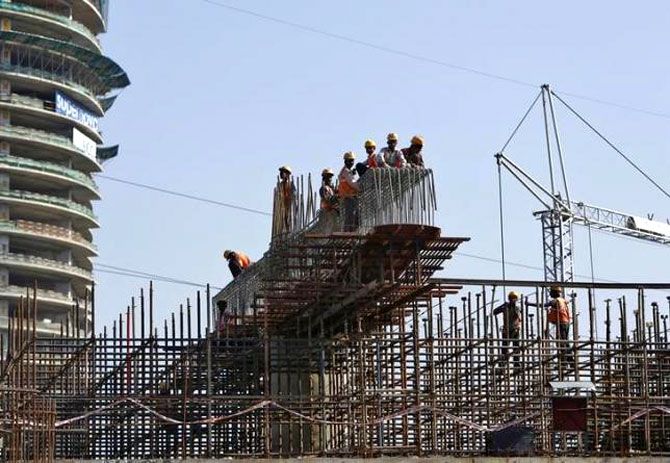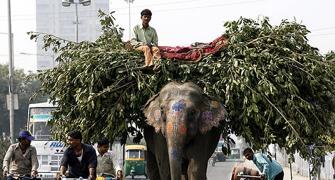
Fragile global recovery and low consumption demand, however, still remained a key concern.
The Business Confidence Index rose to 57.2 points in April-June of FY17, compared to 54.1 in the previous quarter.
The index is based on a survey conducted by CII covering about 200 firms of varying sizes.
However, companies are still not forthcoming in increasing their investments despite expectation of increase in sales and profit after tax, thanks to excess capacity.
Weak global recovery, low consumption demand, high borrowing costs and a lack of political consensus on economic reforms remained the key concerns of the companies surveyed.
More than the current situation, it is expectation about the macroeconomy and their own firms in the remaining period of the year that pushed up the index to the second highest level since the Narendra Modi government took over in May 2014.
Before this, the index was higher only during the second quarter of FY15 at 57.4 points.
The expectations of India Inc were never so high about the macroeconomy since the new government came in.
The expectation index was as high as 60.5 points during the first quarter of 2016-17, compared to 57.5 points in the previous quarter.
As many as 61 per cent of the respondents expected the economy to grow seven to eight per cent this financial year, against the actual growth of 7.6 per cent in the previous year.
Of these, 36 per cent has pegged the growth at 7.5-8 per cent.
However, 25 per cent projected the economy to grow by 7-7.5 per cent, lower than what was registered in 2015-16.
Despite the recent uptick in inflationary pressures, 78 per cent of the respondents believed that the Consumer Price Index-inflation would hover around five per cent in 2016-17, in line with the Reserve Bank of India’s expectations.
The inflation inched up to 22-month high of 5.77 per cent in June, from 5.76 per cent in May.
“So far this year, price pressures have been on the rise due to increasing food and fuel costs and in expectation of the salary and wage increase of central government employees under the Seventh Pay Commission.
However, a normal monsoon may provide some relief from food inflation in the latter half of the year,” Confederation of Indian Industry said.
With inflation expected to fall within Reserve Bank of India’s projections, a majority of the respondents (64 per cent) believed the central bank would cut the policy rate to spur economic growth amid global gloom.

However, the survey did not say whether the cut would come in the next month’s monetary review or later.
The remaining 36 per cent, though, did not think that the RBI would lower the policy rate and expected it to be cautious in its approach.
A major proportion of the respondents, 43 per cent, attributed the recovery in corporate sector to increased government spending.
They felt the turnaround in corporate sector earnings in the fourth quarter of FY16 was mainly because of the increased government spending.
Forty-one per cent of the respondents attributed this recovery to increased consumption demand (private consumption expenditure).
While most of the respondents expected that global recovery and consumption cycle upturn would kickstart the private investment, they did not plan to increase their investments, at least in the current quarter.
This may be because of excess capacity.
However, fragile global recovery and low consumption demand still remained a key concern.
As many as 47 per cent of the respondents feel that capacity utilisation would be as high as 75-100 per cent in April-June of FY17, against 32 per cent who thought so in the previous quarter.
A higher proportion of respondents also expected an increase in sales and new orders.
This, they hoped, would be met through capacity utilisation than fresh investments.
As much as 48.7 per cent of the respondents expected their profits to increase in the April-June 2016 quarter, against 29.2 per cent in the year-ago period.
Nearly 60 per cent of the respondents did not expect a change in the export-import scenario.
However, exports recovered marginally by 1.3 per cent in June, snapping an 18-month-long falling streak.
The image is used for representational purpose only. Photograph: Reuters










